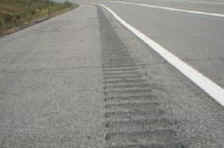U.S. Department of Transportation
Federal Highway Administration
1200 New Jersey Avenue, SE
Washington, DC 20590
202-366-4000

Well, they're supposed to be. The unusual noise tires make as they roll over shoulder rumble strips keeps drivers alive; it also keeps neighbors awake. To fulfill their purpose, shoulder rumble strips must make enough noise and cause enough vibration to get the driver's attention.
How serious is the noise problem? The average noise level inside a passenger vehicle is 60 decibels. It is not clear what increase is necessary to alert a drowsy driver, but numbers from 6-12 decibels are mentioned in various studies. The increase in noise inside the passenger compartment correlates to a larger increase in noise outside the vehicle, which is why neighbors object to rumble strips. Proximity also greatly effects the amount of noise heard by neighbors.
Road agencies have experimented with several alternatives to reduce the noise problem. Some simply ban their use in residential areas, while others try other alternatives to improve safety before considering rumble strips. And when rumble strips are placed near residences, agencies may discontinue the rumble strips where residences are very close to the road or around tight curves where large vehicles are more likely to have a wheel go beyond the edge line. Another alternative is to construct noise barriers, which help. Several agencies have moved the rumble strips farther away from the travel lane. At issue is the more distance between the travel lane and the rumble strip, the less time and distance the errant driver has to react and guide the vehicle back into the travel lane.
A variation on the noise issue is motorists who misinterpret the sound and vibration generated by rumble strips as mechanical or tire problems with their vehicles. Road agencies have received complaints from drivers who thought that rumble strips were defects in the road surface and an obvious sign of shoddy maintenance practices.
A simple response is to post RUMBLE STRIP or RUMBLE STRIPS AHEAD signs to notify drivers what's ahead. These signs are also helpful to bicyclists, but that's the next section.
